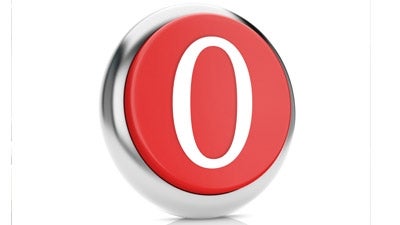
The power and influence of paid media advertising, including print ads, TV commercials, radio, and even online digital campaigns is waning, in favor of unpaid earned and owned messaging from your website, social media, key market influencers, and existing customer word-of-mouth. But startups need to remember that even zero paid media doesn’t mean that marketing is free.
The case for zero paid media as the new marketing model was highlighted in a new book, “Z.E.R.O.” by Joseph Jaffe and Maarten Albarda, both experienced marketers working with new companies, as well as larger firms. They advocate investing in their new framework, where the Z.E.R.O. initials take on meaning as follows:
- Zealots, disciples, and influencers. New products and startups often require a culture shift to drive acceptance, which can best be accelerated by zealots or a visible chief disciple, like Steve Jobs. Other sources stronger than paid media today include key social media influencers, such as “mommy bloggers” and popular YouTube events.
- Earned media. This is media exposure from a neutral third-party, such as an unpaid news story on your product or service to highlight innovations or social value. This exposure is highly credible, since you don’t control the message, and extremely valuable since it is not viewed as part of any advertising context.
- Real customers. Marketing media content from real customers in real time is now commonplace via sites like Yelp, Foursquare, and online reviews. This word-of-mouth media source is also highly credible and valuable, since it comes from “peer” customers, rather than you as the source, or any paid source.
- Owned media. This includes your website, blog, and presence on social media platforms, including Facebook, Twitter, Pinterest, Tumblr, Instagram, and many more. These usually provide a customer’s first impression of your offering, and should not be blatantly self-promotional, but instead informative, educational, and even entertaining.
As I mentioned, this framework is powerful, but none of these elements are free. A while back in a blog article, I pointed out that none of these justify a startup business plan with little or no budget for marketing. All require planning, deliberate actions, and quality content and event creation which will likely absorb all the savings from reduced paid media campaigns.
In any case, reframing the conversation from paid media marketing to the new framework requires a balance, and measurements along the way to better manage return on investment. In the book, Jaffe introduces three new sets of metrics for gauging progress:
- Medium-term metrics. This is essentially a series of interim forecasts not dissimilar from mile-markers in a marathon race that advise whether it’s time to pick up the pace or slow down to smell the roses. Examples include counting members of an advocacy program, app downloads, tenured customers, or subscribers to an e-mail list.
- Long-term sales. We often talk about short-term sales and long-term relationships in mutually exclusive terms. They are polar opposites in terms of their time frames, but how about building a bridge of compromise between them? Whereas every short-term initiative is akin to a traditional campaign, the long-term sales effort is the commitment.
- Short-term wins. Accountability is not optional, as it’s still important to have something to show for your efforts quickly. Only this time, consider the large “W” (big win), the small “w” (small win) or in some cases even the small “l” (small loss), which represents failing fast or failing smart, insights, lessons, learnings, or pleasing initial results.
I’m not suggesting that paid media channels should be seen as dead to young companies, since even the revolutionaries, like Google, Facebook, and Apple, still rely on paid media to optimize their own efforts. And paid media are hardly standing still, continually figuring out ways to be more effective, using big data and other innovations to get more customer attention.
Thus while I see startups quick to jump on the zero paid media bandwagon (for budget reasons), I recommend a balance. First, go for that earned and owned media channel, using the same budget parameters you might have previously allocated for paid media. Later, you can lower the budget as the metrics show results, or apply the remainder to paid media as a follow-on step.
In all cases the tone and resources must be focused on capturing today’s customers, who are looking for engagement and connection, rather than the traditional loudest noise. Z.E.R.O. marketing is not zero marketing.
This article was originally published by Startup Professionals
Published: October 23, 2013
2625 Views
2625 Views












